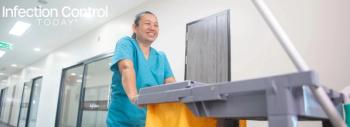
Researchers Study Impact of Oral Hygiene in the Prevention of Ventilator-Associated Pneumonia
Nosocomial pneumonia has correlated to dental plaque and to oropharynx colonization in patients receiving mechanical ventilation. The interruption of this process, by preventing colonization of pathogenic bacteria, represents a potential procedure for the prevention of ventilator-associated pneumonia (VAP).
The study design by
Seven hundred sixteen patients were admitted into the ICU; 219 fulfilled the criteria for inclusion and 213 patients were included; 108 were randomized to control group and 105 to intervention group. Toothbrushing plus 0.12% chlorhexidine gel demonstrated a lower incidence of VAP throughout the follow up period, although the difference was not statistically significant (p = 0.084). There was a significant reduction of the mean time of mechanical ventilation in the toothbrushing group (p = 0.018). Regarding the length of hospital stay in the ICU and mortality rates, the difference was not statistically significant (p = 0.064).
The results obtained showed that, among patients undergoing toothbrushing there was a significant reduction in duration of mechanical ventilation, and a tendency to reduce the incidence of VAP and length of ICU stay, although without statistical significance.
Reference: de Lacerda Vidal CF, et al. Impact of oral hygiene involving toothbrushing versus chlorhexidine in the prevention of ventilator-associated pneumonia: a randomized study. BMC Infectious DiseasesBMC series – open, inclusive and trusted201717:112
Newsletter
Stay prepared and protected with Infection Control Today's newsletter, delivering essential updates, best practices, and expert insights for infection preventionists.






